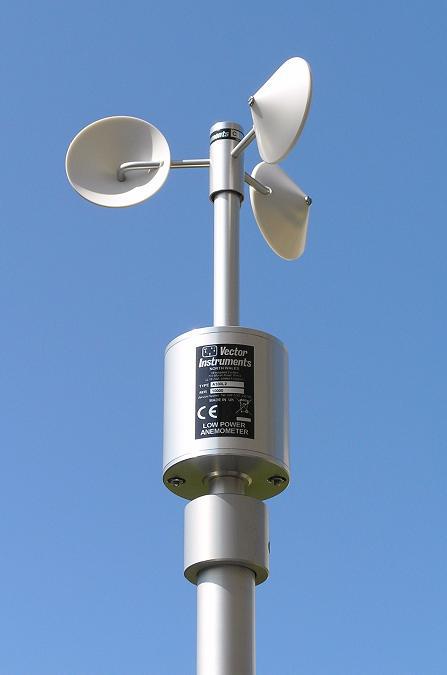Contrasting Digital and Mechanical Anemometers: Which is Right for You?
Contrasting Digital and Mechanical Anemometers: Which is Right for You?
Blog Article
Anemometers Unveiled: Comprehending Their Relevance in Ecological Surveillance and Precaution
The duty of anemometers in ecological tracking and safety steps is typically ignored, yet their value is indisputable. These tools have a long background rooted in scientific query and technical innovations, evolving to come to be crucial devices in numerous areas. From weather forecasting to aviation security, anemometers play an essential function in offering precise information that educates decision-making processes and improves overall safety. Recognizing the intricacies of anemometers unveils a globe of critical insights that are fundamental to our understanding of the environment and the procedures we require to make certain safety and security.
Background of Anemometers
The evolution of anemometers can be mapped back to the old human beings where rudimentary wind measuring devices were initial made use of. One of the earliest recognized anemometers was the hemispherical mug anemometer developed by Leon Battista Alberti in the 15th century.
In the 18th century, the distinguished researcher John Thomas Romney Robinson presented the Robinson anemometer, which included four hemispherical cups installed on straight arms that expanded from a main axis. This layout ended up being a criterion in meteorological measurements due to its accuracy and dependability. Throughout the years, innovations in technology resulted in the advancement of more contemporary anemometers, including ultrasonic anemometers and laser Doppler anemometers, providing enhanced precision and effectiveness in determining wind rate and instructions. The background of anemometers showcases an impressive trip of innovation and progress in the area of weather forecasting.
Kinds Of Anemometers
Throughout the field of meteorology, numerous types of anemometers have actually been created to precisely gauge wind speed and direction. Sonic anemometers use ultrasonic signals to gauge wind rate and direction precisely. Hot-wire anemometers run based on the principle that the cooling result of wind on a heated cable is symmetrical to the wind rate.
Applications in Meteorology
Having reviewed the various kinds of anemometers utilized in meteorology for measuring wind rate and direction, it is important to explore their sensible applications in the field. Anemometers play an essential duty in weather forecasting by providing real-time and precise data on wind problems (anemometer). Meteorologists make use of anemometers to keep track of wind speed and direction to anticipate climate patterns, concern warnings for severe weather condition occasions like hurricanes, tornados, and hurricanes, and analyze atmospheric conditions for aviation security
In meteorology, anemometers aid in understanding regional and neighborhood wind patterns, which are crucial for predicting weather changes and determining climatic fads. These tools are additionally made use of in research study to study microclimates, city warm islands, and air contamination dispersion. Additionally, anemometers are used in farming to optimize crop management techniques, such as irrigation and chemical application, based upon wind conditions.
Importance in Aviation Security
An important element of guaranteeing aeronautics security depends on the careful monitoring of wind problems using anemometers. Anemometers play a critical duty in aeronautics by offering real-time information on wind speed and instructions, helping check this site out pilots in making notified choices during liftoff, flight, and landing. Uncertain and strong winds can considerably affect aircraft operations, making it important for air travel authorities to count on exact wind dimensions to guarantee the safety and security of passengers and team.

In the dynamic setting of aviation, where also minor adjustments in wind speed and instructions can have extensive impacts, anemometers stand as vital tools for advertising secure and safe air traveling.
Role in Environmental Research Study
Just how do anemometers contribute to developments in ecological research? Anemometers play an essential function in ecological research by giving vital information on wind rate and direction. This info is crucial for understanding numerous climatic processes, such as air pollution dispersion, weather condition patterns, and climate modification. By properly gauging wind characteristics, anemometers help researchers assess the activity of pollutants in the air, evaluate the effect of commercial discharges, and forecast the spread of contaminants in the atmosphere.


Conclusion
In final thought, useful site anemometers have actually played a crucial function in ecological tracking and security measures. With an abundant background and numerous kinds offered, these gadgets have been widely made use of in weather forecasting, aeronautics security, and environmental research. Recognizing the relevance of anemometers is necessary for precisely determining wind speed and instructions, which is crucial for anticipating weather patterns, ensuring secure air travel operations, and carrying out environmental studies - anemometer. Their payments to these areas can not be ignored.
One of the earliest recognized anemometers was the hemispherical mug anemometer invented by Leon Battista Alberti in the 15th century. Over the years, advancements in modern technology led to the growth of even more modern-day anemometers, consisting of ultrasonic anemometers and laser Doppler anemometers, using enhanced accuracy and efficiency in gauging wind rate and direction. Hot-wire anemometers operate based on the concept that the cooling effect of wind on a heated cable is symmetrical to the wind speed. Meteorologists utilize anemometers to monitor wind rate and instructions to anticipate climate patterns, problem warnings for serious weather condition occasions like cyclones, hurricanes, and tornados, and assess atmospheric conditions for aviation safety and security.
Comprehending the relevance of anemometers is Click Here important for properly measuring wind speed and direction, which is vital for anticipating climate patterns, ensuring secure aviation operations, and conducting environmental studies. (anemometer)
Report this page